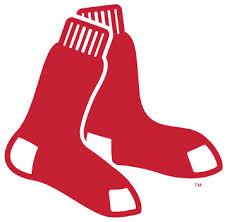 I Don’t Know (wait…he’s on third). Major League Baseball’s Spring Training kicks into high gear this week. Red Sox position players reported on February 18th and today (Feb. 20th) is the team’s first full squad workout. The players know their positions. Some players are versatile and can rotate around the lineup; however, once they are all on the field and in position, there is no confusion about their roles and what’s expected of them. That’s the way it should be. Clear responsibilities set by management and known by their teammates.
I Don’t Know (wait…he’s on third). Major League Baseball’s Spring Training kicks into high gear this week. Red Sox position players reported on February 18th and today (Feb. 20th) is the team’s first full squad workout. The players know their positions. Some players are versatile and can rotate around the lineup; however, once they are all on the field and in position, there is no confusion about their roles and what’s expected of them. That’s the way it should be. Clear responsibilities set by management and known by their teammates.
Can you state that your senior team and all your employees are clear about their roles and responsibilities? Abbott and Costello highlighted the frustration and tension when there is a lack of clarity about ‘Who’s on First’. Here’s a contemporary take on the skit:
Role clarity has a distinct impact on your company’s overall performance.
If that sounds like Business 101 common sense, then why is it that in many of the Stuck companies where I have worked, there is a great deal of organizational fuzziness and they are Stuck in the Slow Lane?
What causes role ambiguity?
- frequent personnel changes, turnover
- growth/constant change that should trigger frequent reorganization, but it does not occur
- increasing complexity of the organization necessitates changes to employees’ work and duties
- modifications in how work is performed – e.g. process improvements, lean enhancements, implementation of new technology
- leadership’s attitude about communication (or the lack thereof)
- general complacency by senior management
- gradual changes to the business combined with either or both #5 and #6
What are the negative consequences of role ambiguity?
- personal boundaries are not clear
- individuals become more anxious and frustrated in their work
- confusion and conflict
- important functions might not have clear ‘owners’ and tasks are left undone
- just the opposite of #3 – duplication – multiple people think they ‘own’ a particular function
- personal, team and overall productivity suffers
- significant emotional energy wasted on figuring out ‘who’s on first’!
- “That which is owned by all is cared for by no one.” (anonymous) – I have first-hand recent experience with this – one of my daughters is getting married in 2014. On our family’s gigantic wedding planner spreadsheet my other daughter insisted that it wasn’t okay for the task (such as choosing hotels) to be given to a team of 2-3 even though the rest of us said it was okay. Each task had to have a ‘buck stops here’ person, with assistance from other family members if needed. My ‘buck stops here’ is transportation for the wedding party. Now all I need is Martha Stewart on my team.
Arguments I’ve Heard About Why Role Clarity is not important
- We have an entrepreneurial culture. We need to be flexible and not get bogged down with strict rules. Flexibility is good, but chaos isn’t. Clean up the role clarity.
- Some of our people need to wear multiple hats. That’s fine, but make sure they and others know what those hats are.
- We don’t need to obsess about this stuff – our employees are completely clear about their roles. Great, would they all agree? See #5 and #6 above in the ‘What Causes’ section.
How can role ambiguity be fixed?
People are an organization’s most important asset. They shouldn’t be left drifting.
- Toss out the current organization chart, outdated ways of looking at the business and complete what I call a Functional Analysis of the company. Develop a list of functions and necessary roles for the business TODAY, not what it was like years ago.
- After this is complete, start dropping names into the best functional slots to fit each person’s skills. Assign one owner to each function and identify others who are expected to assist with that particular function (but not own it).
- Draw a new organizational chart. Form follows function.
- Develop new job descriptions with your employees. Write them down; publish them in a way that all employees have access to them.
This type of analysis is not complicated, but it can be a bit intimidating, especially if some members of the management team feel insecure about their current roles in the company. The goal with this type of analysis is to do what’s best for the company, the employees and the shareholders.
p.s. Go Sox! Repeat 2013?